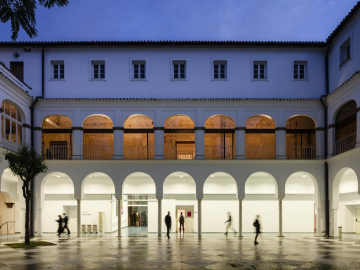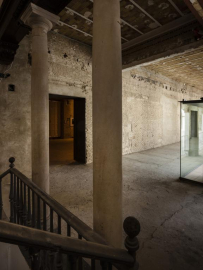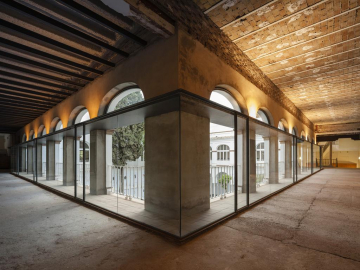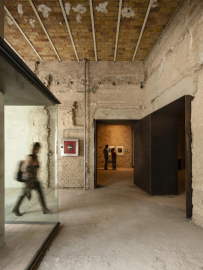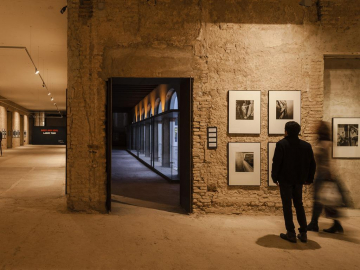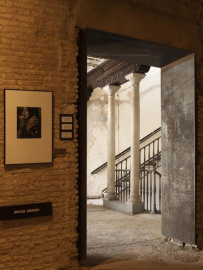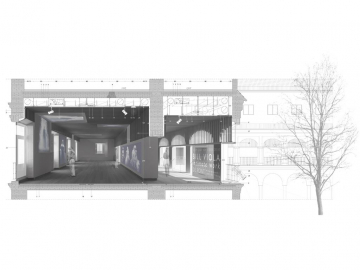Contemporary Art Space in the old Convent of Madre de Dios
Contemporary art space in old convent of Madre de Dios. Seville, Spain
The Project involves adapting a convent of the 15th century into an exhibition and creation space of contemporary art. The surface of intervention is 856 m2.
The intervention interprets the building where it is inserted like a context in constant transformation over past and present time. The project arises from reflection around the creation in contemporary art, its unpredictable condition and the current dissolution of limits between the space of the artist s production and the work exhibition. So that we think that the contemporary exhibition space cannot be projected like a static space but like a space in suspension points waiting for each exhibitions continues completing it. From this, the intervention is projected like if it were a variable and reversible theater space where the walls and ceilings will be covered by a suspended structure of slats of wood. This wooden structure will function as a scenic machine where different works and equipments will be able to be hanged, nailed or assembled. The separation among the different beams and upright posts of wood will allow see the original brick walls, showing theirs wounds and the varied textures of the surface. At same time it will allow access to all installations in any point of the space.
The intervention acts as a initial art installation rather than an architectural intervention. This is like a temporary exhibition or theatrical changing space relied on the existing volume that enables its construction little by little, making the most of the current scarce resources. We understand that the really important thing in this building is the space and the memory of place which we can explore through the material traces that still remain in their walls, ceilings and structure and the capacity of the space to adapting to the different contemporary artistic works.
This kind of interventions, done across the time, make us to think we are part of a project it began five centuries ago, with the foundation of the original convent. We are just one layer more in time of a space which will continue changing in the future. Perhaps, this is the most sustainable way to think on architecture, as a great work made between all of us in which we can participate even when we work with these minimum budgets; we have just to work with the mass that it already exists, discovering different relations between past and present.

